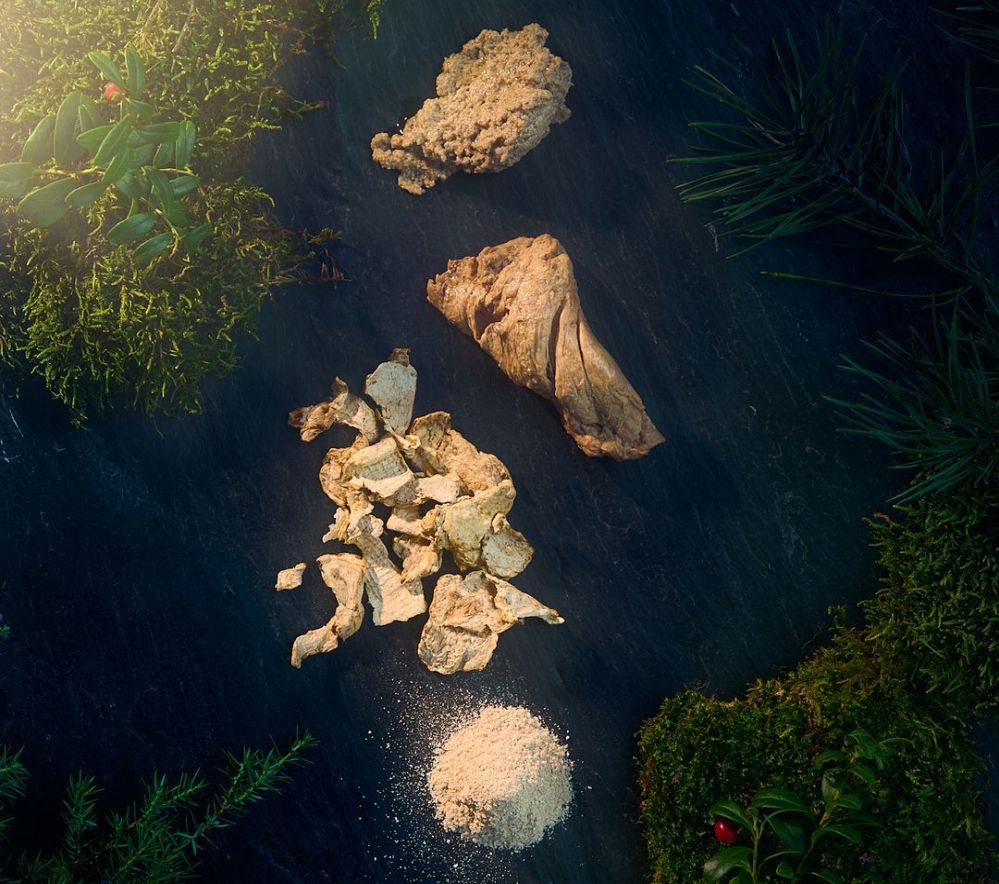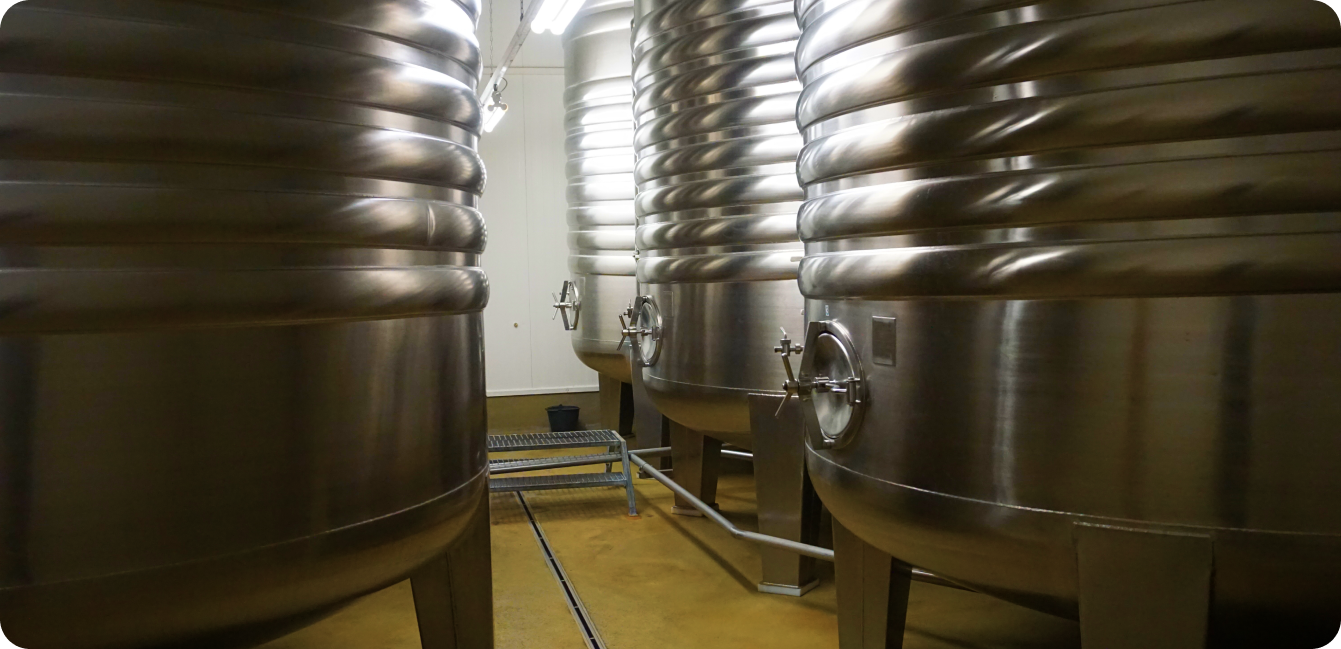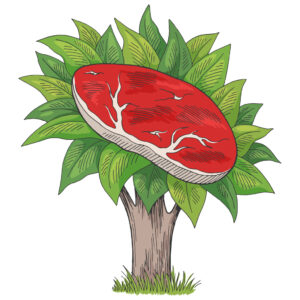It’s not a great time to try and persuade jaundiced investors to part with cash for alternative proteins, observes Nosh.bio cofounder and CEO Tim Fronzek. But they’ll be hard-pressed to “find another company in the food space that has developed so fast in only two years,” he observes.
“By the end of this year, when we start running our own production site, we will be one of the biggest mycelium producers in the world,” claims Fronzek, who has already struck deals with two food companies making annual revenues in the billions. “And we will still not even be three years old.”
Berlin-based Nosh.bio is not alone in deploying biomass fermentation to grow fungi as a food ingredient: better-capitalized players from Quorn to ENOUGH Foods, Enifer, MyForest, Meati, Mycorena, Nature’s Fynd, and Infinite Roots, immediately come to mind. But it is the only one that can produce a meat analog with one ingredient, no pricy texturizing technologies, and no additives or binders, claims cofounder and CTO Dr. Felipe Lino.
And unlike some other players in the space, says Lino, Nosh.bio is not placing all of its eggs in the alt meat basket. Its ingredient (Aspergillus Oryzae – labeled as fermented koji protein) is attracting interest from leading food companies as a clean label, vegan replacement for eggs in everything from baked goods to mayo, and as a replacement for gums and stabilizers in ice cream (dairy and non-dairy).
From a regulatory perspective, meanwhile, Aspergillus Oryzae is not considered a novel food and is GRAS (Generally Recognized as Safe) in the US, enabling rapid market entry into the firm’s two initial target markets. It can also grow on multiple feedstocks in food grade fermentation tanks retrofitted from breweries.
AgFunderNews (AFN) caught up with Fronzek (TF) and Lino (FL) to talk fungi, funding, and the inevitable comparisons with Quorn…

AFN: Tell us the origins story…
TF: I studied business administration and then in 2005 I co-founded my first company [‘re-commerce’ platform rebuy], an online marketplace allowing users to buy and sell [pre-owned] consumer electronics, books and media items, with the idea to have an impact by reducing the carbon footprint of mass consumption.
When I left in 2020, the company had [annual] revenues of €200 million, and it was profitable with several hundred employees. I then took most of the rest of the year off to spend time with my kids, but then after a while, I was feeling ready to do the next thing.
So climate change really keeps me up at night. That was the case before I had kids, but since I’ve had them, I feel an even stronger sense of urgency. It is super unfair what we’re doing to the planet and we won’t come close to meeting the 1.5 degrees target [preventing temperatures rising by more than 1.5°C over pre-industrial levels] if we are not disrupting the food industry.
A good friend of mine is an active entrepreneur in the alternative protein space in Berlin, and he said, Hey, we have this super nice guy [soon-to-be Nosh.bio cofounder Dr. Felipe Lino, who previously worked at AB InBev and Novozymes] who approached us with an idea. Do you want to meet him? So I said yes, for sure, and then I met Felipe. His ideas for biomass fermentation were super inspiring, but there was also a great personal match.
AFN: There are a lot of players in alt proteins, what made you think you could crack the code?
TF: It’s a fair question. We’re talking about a market share [for meat alternatives] that is not even a percent, so it’s insignificantly small. And we tried to understand: why is this the case? Why has no one so far been more successful in convincing average households to buy these products?
But let’s be honest, you can only build your products using ingredients that are readily available, and price is the biggest problem. If products are more expensive than their animal-based counterparts, even if people want to change, they cannot. So this for us, was the first thing that needed to addressed.
But taste and texture also stop many people from consuming these products, even people that can afford to pay more, and then there’s the length of ingredients lists. People don’t feel good about eating these products. We are addressing all of these issues with a single ingredient product that is affordable with a production process that’s zero-waste.
AFN: You’re doing biomass fermentation… with what?
FL: We’re using Aspergillus Oryzae [or ‘koji,’ best-known for fermenting soybeans to make soy sauce or as a microbial production platform for precision fermentation], which is a classical strain for food fermentation, especially in Asia, but it’s also a workhorse for enzyme production.
But we’re doing something different. We know how to produce it at large scale, so why only focus on what it can produce, but leave all the biomass behind, when it has such interesting properties?
AFN: How does your product compare to Quorn, ENOUGH Foods, et al?
FL: Aspergillus Oryzae behaves significantly differently from Fusarium venenatum [fungi used by Quorn and ENOUGH Foods]. It has a pleasant umami taste although we can can remove that, and it has significantly longer fibers and this collagen-like quality so you don’t need to use energy-intense process steps to create animal-like textures, or add egg whites or methylcellulose to hold it together. It’s animal-like directly from the fermentation. Our process is simpler, more robust, and more cost efficient, compared to Fusarium.
We can supply it fresh, which is about 75% moisture content, or we can dry it for shelf-life purposes. We can also grind it to make a powder that can be used to replace gums and stabilizers in ice cream, where it can also increase the melting point.
AFN: So it’s not just used as a meat alternative?
FL: It goes way beyond that, which is another way we differentiate ourselves from the other mycelium companies. So we can play a role in conventional as well as dairy-free ice cream. We can replace cocoa nibs in chocolate and other confectionery products, which has a huge impact on cost. We can replace egg whites in bakery applications, and we can stabilize and thicken sauces, or just enrich the protein content of snacks and drinks, so it’s really versatile.
AFN: If it’s so versatile, why haven’t companies used it before?
FL: I don’t think anyone has really looked at which kind of microorganisms have this collagen-like domain on the genome that could help us provide functionalities that are missing today.
People are still trying to look for functional ingredients from precision fermentation because it’s easier to patent that. But the process is too expensive. We try to think differently and see what nature has to offer us. We are using something that is readily available and the industry knows it’s safe to consume.

AFN: What’s your feedstock?
FL: The fungi is very versatile, so we can use pure sugars, but we can also use starch, malt extract, or corn syrup. We are also looking at cellulosic sugars to further reduce our carbon footprint. So maybe in the future we can provide something that’s actually carbon negative to the industry.
I agree it’s challenging for some of these [next-generation] feedstocks, but there are ways you could make it work, for example by partnering with a major brewery that could hydrolyze its spent grains in a centralized facility and provide a low carbon feedstock for other players. Or you could partner with a bioethanol facility that has cellulosic streams produced. So there are different paths we could follow, but what’s important is that we are versatile, so we can use different sources of feedstocks depending on where our facilities are.
AFN: What kind of things can you make with your ingredient?
FL: It’s very versatile, so you can make anything from beef jerky to crab cake to bacon strips and other meat alternatives to waffles and mayonnaise where we replace the eggs.
TF: We are the only ones providing a single-ingredient meat analog from veal to saltimbocca to gyros.
AFN: How tunable is your process?
FL: Some of it depends on the feedstock, so we can have something that is beige to brown that works really nicely for some meats for instance, or we can have something that is off-white that works really well for ice cream. It really depends on what the customer is looking for. We can also fine tune the texture based on the moisture content and do other things to change the morphology of the fungi and tailoring fiber length.
AFN: What’s the nutritional profile of the product coming out of your bioreactors?
FL: It’s roughly 50% protein by dry weight with a complete amino acid profile, 36-37% prebiotic fibers, including beta glucans, no cholesterol, very little fat, very little carbohydrate, and quite rich in minerals such as zinc, selenium, and copper.
AFN: What’s the regulatory status of your product and how is it listed on the ingredients list?
TF: It’s not novel in Europe, and it’s GRAS in the US, so regulatory-wise in Europe and in the US, there is no issue. It’s listed as fermented koji protein.
AFN: What’s your manufacturing setup?
TF: We are currently producing at a scale of around five tons per week with a CMO [contract manufacturer]. And since October last year, we have leased a shut down brewery with capacity of 280,000 liters and we are now retrofitting the tanks to increase this to 500,000 liters. By the beginning of next year, probably, we will be able to produce 5-10,000 tons of products in our own facility and roughly 5,000 tons with the CMO.
AFN: What’s your business model and what kind of interest have you had from the food industry?
TF: We have a b2b model simply because we want to create impact as soon as possible. If you try to build up your own brand and set up distribution channels and acquire customers, this takes a while and we don’t have time. It’s better to offer the technology to existing companies that can leverage investments they’ve already made.
The interest that we have from the food industry is really significant. We’ve just signed the first commercial contract with a company that makes more than 7 billion euros of revenues per year, so it’s a huge company. We are also collaborating with Barilla, which is also very big and we have a pipeline full of very large companies.

AFN: How have you funded the company?
TF: We did our €3.2 million seed round early last year led by Earlybird with participation from Clear Current Capital, Grey Silo Ventures, and Good Seed Ventures. We are now about to raise our Series A so we have proven the concept, we have all the products developed, and the production facilities are ready to scale up. And now it’s really about raising the next portion of money to scale capacity further.
AFN: How are investors looking at this space given that sales of alt meat have stabilized or fallen in many markets?
TF: In general, we’ve had a very positive [reception]. It’s difficult to find another company in the food space that has developed so fast in only two years. By the end of this year, when we start running our own production site, we will be one of the biggest mycelium producers in the world. And we will still not even be three years old then.
But the main reason [for the positive reception] is that our product is super convincing. The fact we are not a novel food and we’re not GMO also helps.
We’ve also designed a process where we can retrofit available fermentation capacity from existing food grade infrastructure allowing for leaner cost structures and quicker upscaling.
FL: I think people like our versatility. We can provide a solution to this broad vertical of the industry that most companies cannot do. They are bound to a specific product or category, and if that fails, they don’t have anything else.
AFN: When do you expect products containing Nosh.bio ingredients will hit the market?
TF: Best case scenario two months, worse case maybe four or five months, so we are really close to having the first product in the market.
AFN: What IP do you have?
FL: Obviously, the fungi is not proprietary to us but the applications are proprietary. So if you try to develop a single ingredient meat analog or certain applications using this as a functional ingredient you will be infringing our IP. We’re also protecting the concept of retrofitting the breweries, so the production process, although we’re keeping some stuff out.
















GUEST ARTICLE: Are plant-based meats cooked?